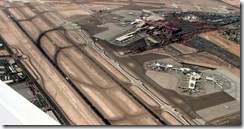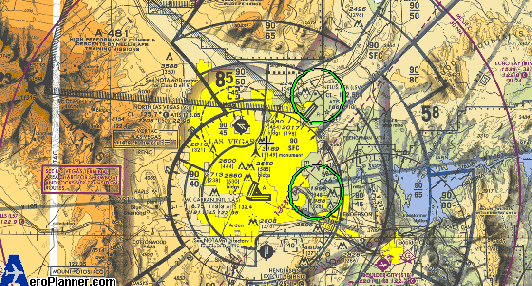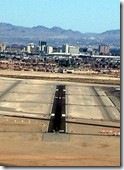
John Page starts his CPPP flying training in Las Vegas and flies into the famous Nellis Air Force Base. A long lie-in, all the nines, sky clear and 18 degrees. In March. Who says instructors work too hard?
Saturday, the first day of the CPPP proper. The students arrived at Northtown terminal early. Really early. Air Force early. Meanwhile the instructors had a lie in. We didn’t actually meet until 10.30 for our instructor brief before flying at 1200 with the first of our students.
This was when I first heard the names of my victims: Floyd Kearns from Texas and Mark Bellio from Colorado. All the instructors were given packs including NOS approach plates and sectional charts.
Not having flown in the Las Vegas area before I had already purchased the charts from Marv Golden and they were delivered to me a few weeks earlier so I could study them. I highly recommend this if you are planning on flying in an unfamiliar territory. All the instructors studied the charts and were given a brief on the airport itself by the airport manager.
Las Vegas Northtown has the number one spot for runway incursions. Not something to be proud of. Therefore ‘hold short’, ‘line up’ and cross runway’ instructions must be read back. The controllers simply will not accept ‘wilco’ as a valid answer. Due to the amount of Cirrus traffic departing into the area around Las Vegas at the same time we were given designated areas to fly to. Mine was to the South East, which was great because that included the Grand Canyon and the Hoover Dam as visual reference points.
One of the instructors, Jeff Moss had managed to organise approaches at Nellis Air Force Base – an opportunity not to be missed. If only we could have got into Area 51.

Just before noon we met up with our students, Floyd was flying first while Mark continued with ground school until 1500. We had a bite to eat and briefed about the flight ahead. Floyd is a lovely guy with over 600 hours on his SR22, N989DF. Floyd’s Cirrus was an older six-pack model with a Sandel EHSI but an upgraded release 6 MFD with weather. It’s obviously Floyd’s pride and joy and he keeps it very well.
The FAA are always looking at ways to improve their pilots currency. One way of doing this is via the Wings Programme, advisory circular (AC61-91H). Instead of the BFR every two years a pilot can fly a phase of the Wings Programme each year. It consists of three hours of flying. One hour of flight training must include basic airplane control, stalls, turns and other manoeuvres directed towards mastery of the airplane. One hour of training must include approaches, take offs and landings including crosswind, soft field and short field techniques. Finally, one hour of instrument training in an airplane, FAA approved aircraft simulator or training device. The insurance companies like this too, as I was told later in the day by Mark my other student whose insurance company stipulates that he has recurrent training every year.
With all of this in mind myself and Floyd decided to brief on the manoeuvres required for the Wings Programmes and discussed where we were going to fly. We chatted about the radio calls required at the airport and while airborne in the busy McCarran airspace.
We walked onto the ramp, behind the Citations and Falcons down to where the light aircraft were all parked. The Clear blue skies and 18°C heat meant the day was lovely and comfortable. I wistfully thought about the chilly days in the UK as I climbed into the aircraft.

 I was invited to be an instructor at
I was invited to be an instructor at 